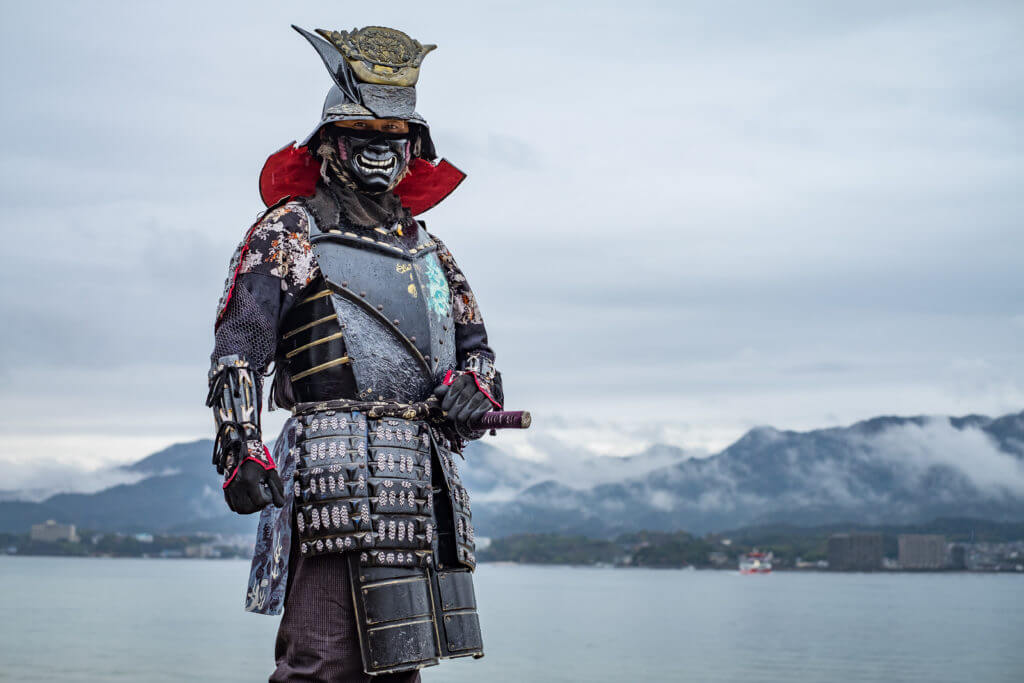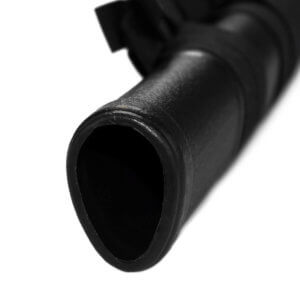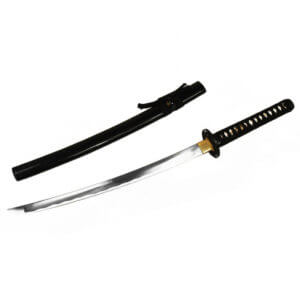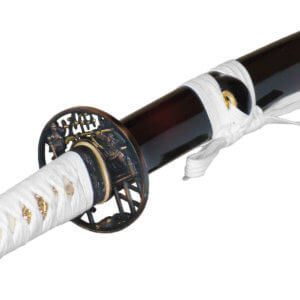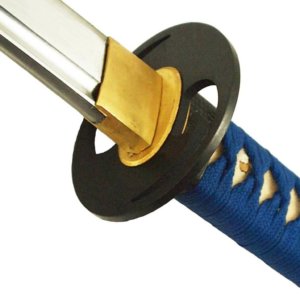Samurai warriors wore elaborate armour to provide the best possible protection from enemy attacks. The term yoroi (鎧 in Japanese) is the generic term for Japanese armour. The prevailing era and the respective status of the warrior then determined how his armour was made and looked in detail.
For samurai in particular, who did not travel on horseback, the armour not only had to provide good protection against enemy attacks, but also had to be as light as possible in order to restrict the wearer's freedom of movement as little as possible.
The development of samurai armour
From the beginning of the 10th century, two types of samurai armour became established, which are generally regarded as classic samurai armour today.
These were the heavy O-Yoroi samurai armour, which was primarily intended for movement on horseback, and the Domaru samurai armour. The former was made of metal plates that were connected to each other with cords. As it offered good protection against sword blows and arrow shots, but restricted freedom of movement in ground combat, the domaru armour was introduced for foot soldiers in the 10th century, which was considerably lighter.
Although both types of samurai armour were worn and further modified in the 12th - 14th centuries, a combination of the domaru samurai armour with a kabuto (helmet) became increasingly popular. The heavy O-Yoroi armour became increasingly rare and was only rarely worn by high-ranking samurai.
The experiment
As sword fans, we are of course particularly interested in one question: Can a samurai's armour effectively withstand blows from a sharp katana? What injuries would the samurai sustain? Of course, these questions can only be answered in a live test. Fortunately, the guys from Iron Mountain Armory accepted this challenge and recorded their experiment in the form of a video. We have embedded it at the bottom of the article.
In order to determine the limits of samurai armour, different katana strikes and their effects on the armour were examined during the experiment.
Blow from above against the helmet
The helmet absorbs the force of the blow very well. The samurai would have survived this blow without serious injury.
Blow to the stomach/chest armour
Here too, the picture is that the samurai would have felt the blow very clearly, but would have absorbed it without any real injury. Another point for the armour.
Strike against the cords holding the armour together
The katana used in the experiment easily cuts through the cords that hold the breastplate and apron links together. However, not enough cords are cut to cause the armour to fall apart. The samurai remains largely unharmed.
Blow from above on the shoulder
The armour protects the shoulder very well and absorbs the incoming force. Apart from various bruises, the samurai would survive a blow to it unscathed.
Blow to the neck guard
The blow to the neck protection plates is similar. The samurai would have survived slightly injured.
Strike against the armour
The arm armour used in the experiment is held together in the middle by a chain mesh, which also serves to improve mobility. Both a blow against the forearm armour and against the chain mesh were tested. The result is that both blows would probably result in a broken arm, but the samurai is otherwise well protected.
The finale: a blow to the face mask
The face is particularly difficult to protect. The experiment shows that a single blow with the sword against the cords connecting the face mask to the lower part of the armour exposes the neck, which could then be injured with the next blow. This is clearly a weak point in the armour.
Conclusion
A samurai's armour is very good at protecting him against most possible sword strikes. However, it also has weak points and restricts the wearer's mobility. Of course, much depends on the armour and sword used. However, the demonstration shows how effectively armour works.
This video contains the complete experiment. Very worth seeing!

